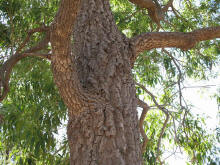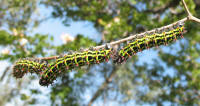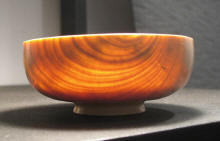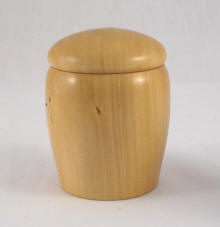|
|
Bitter Bark(Alstonia constricta)
Also known as: Quinine tree/bush | |
|
|
Bitterbark is used in homeopathy to treat malaria as well as having other medicinal uses. |
|
|
|
The timber is quite ordinary color-wise and is prone to mould if it doesn't get enough air while drying but is fairly stable with regard to shrinking/cracking. It turns quite well and sands and finishes nicely.The small bowl pictured was just a test (for both the wood and my skill) to see how thinly I could turn it. The wall of the bowl is roughly 0.5mm thick as a light arranged above it demonstrates. |
|
Back to Top |
|







